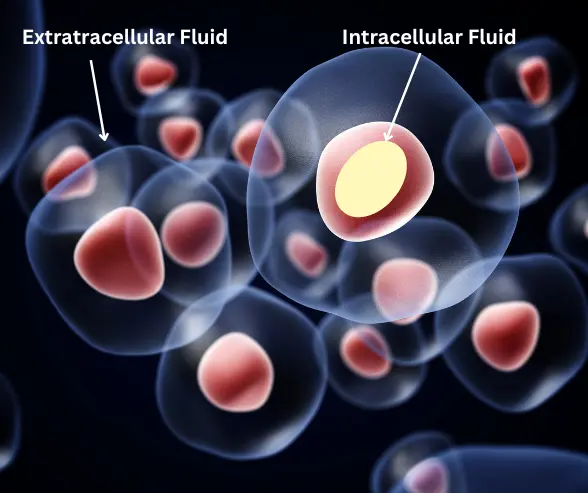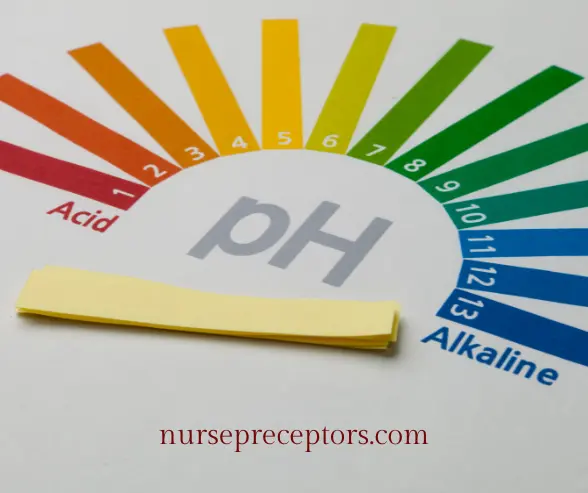When it comes to understanding the complex mechanisms that keep our bodies functioning optimally, ions and electrolytes often don’t get the attention they deserve. Yet, they play crucial roles in everything from maintaining fluid balance to powering the electrical impulses that drive our heartbeats.
In this comprehensive article, Our Online Trusted website Nurse Preceptors explores what ions and electrolytes are, why they are essential, and how they impact your overall health.
What are Ions and Electrolytes?
Ions are atoms or molecules that carry an electrical charge, either positive or negative. Common ions in the human body include sodium (Na+), potassium (K+), calcium (Ca2+), chloride (Cl-), and bicarbonate (HCO3-). Electrolytes are substances that produce these ions when dissolved in water, and they are vital for a variety of bodily functions.
Below is a detailed table of the primary ions found in the human body, including their functions, normal concentration ranges, and where they are most commonly found:
Identifying the Learning Needs of Patients: A Comprehensive Guide for Nurses
| Ion | Symbol | Primary Functions | Normal Concentration | Location |
|---|---|---|---|---|
| Sodium | Na+ | – Regulates fluid balance – Facilitates nerve impulse transmission – Supports muscle contraction | 135-145 mmol/L (blood plasma) | Extracellular fluid (ECF), blood |
| Potassium | K+ | – Maintains cell membrane potential – Facilitates nerve impulse transmission – Supports muscle function | 3.5-5.0 mmol/L (blood plasma) | Intracellular fluid (ICF), blood |
| Calcium | Ca2+ | – Supports muscle contraction – Facilitates nerve signal transmission – Bone and teeth formation | 2.1-2.6 mmol/L (blood plasma) | Bones, teeth, blood plasma |
| Chloride | Cl – | – Maintains osmotic pressure – Balances electrolytes in cells – Supports acid-base balance | 96-106 mmol/L (blood plasma) | Extracellular fluid, blood plasma |
| Magnesium | Mg2+ | – Enzyme activation – Supports muscle and nerve function – Regulates heart rhythm | 0.7-1.0 mmol/L (blood plasma) | Intracellular fluid, bones, muscles |
| Bicarbonate | HCO3 – | – Maintains acid-base balance (pH regulation) – Acts as a buffer in blood | 22-28 mmol/L (blood plasma) | Blood plasma, extracellular fluid |
| Phosphate | PO4^3- | – Bone and teeth formation – Energy storage and release (ATP) – Acid-base buffer | 0.8-1.5 mmol/L (blood plasma) | Bones, teeth, intracellular fluid |
| Sulfate | SO4^2- | – Detoxification processes – Protein synthesis | Varies (trace amounts) | Cells, connective tissues |
| Iron | Fe2+/Fe3+ | – Oxygen transport (hemoglobin) – Electron transport (cytochromes) | 60-170 µg/dL (serum) | Red blood cells, liver, muscles |
| Copper | Cu2+ | – Enzyme function (cytochrome c oxidase) – Iron metabolism – Antioxidant defense | 70-140 µg/dL (serum) | Liver, brain, blood |
| Zinc | Zn2+ | – Immune function – DNA synthesis – Enzyme activity | 70-120 µg/dL (serum) | Cells, liver, muscles |
| Iodide | I – | – Thyroid hormone synthesis (T3 and T4) | 0.5-1.5 µg/dL (serum) | Thyroid gland, blood |
| Fluoride | F- | – Strengthens bones and teeth – Prevents dental caries | 0.01-0.05 mg/L (serum) | Bones, teeth |
| Hydrogen | H+ | – Maintains pH balance (acid-base regulation) – Involved in cellular respiration and energy production | pH 7.35-7.45 (blood plasma) | Blood, intracellular fluid |
Key Points:

- Concentration Ranges: The normal concentration ranges provided are typically for blood plasma, as these values are crucial for maintaining homeostasis.
- Extracellular vs. Intracellular Fluid: Sodium and chloride are primarily found in extracellular fluid (outside cells), while potassium and phosphate are more abundant in intracellular fluid (inside cells).
- Special Functions: Some ions, like iron and iodine, have specific roles, such as oxygen transport (iron in hemoglobin) and thyroid hormone production (iodine).
- Bone Health: Calcium and phosphate are essential for bone and tooth structure, with a significant portion stored in bones.
- Primary Functions: Electrolytes are vital for various physiological functions, including nerve signal transmission, muscle contraction, hydration, acid-base balance, and enzyme activation.
- Location: Some electrolytes, like sodium and chloride, are predominantly found in extracellular fluid, while others, like potassium and phosphate, are more concentrated in intracellular fluid.
- Health Implications: Imbalances in electrolyte levels can lead to serious health issues, including dehydration, arrhythmias, muscle cramps, and more.
Why Are Ions and Electrolytes Important?

Mastering the NCLEX-RN Exam: A Comprehensive Guide for Aspiring Nurses
Diagnostic Tests for Ions and Electrolytes
Identifying an imbalance in ions and electrolytes is crucial for diagnosing and treating various health conditions. Here are some common tests used to measure electrolyte levels and their significance:

How to Maintain Healthy Ion and Electrolyte Levels in the Body?
Maintaining the right balance of ions and electrolytes is essential for good health. Here are some tips:
- Stay Hydrated: Drink plenty of water, especially during hot weather or after exercise. Consider sports drinks with electrolytes if you’re engaging in prolonged, strenuous activity.
- Eat a Balanced Diet: Include a variety of foods rich in essential minerals like sodium, potassium, calcium, and magnesium. Leafy greens, fruits, nuts, seeds, and dairy products are excellent sources.
- Monitor Your Health: If you have a condition that affects your electrolyte balance, such as kidney disease, follow your healthcare provider’s advice on diet and medication.
Common Causes of Electrolyte Imbalance
Electrolyte imbalances can develop due to various factors, including:
- Dehydration: Caused by excessive sweating, diarrhea, or vomiting, leading to a loss of both water and electrolytes.
- Kidney Disorders: The kidneys regulate electrolyte levels so that any dysfunction can lead to imbalances.
- Medications: Certain drugs, like diuretics, can cause the body to excrete excess electrolytes.
- Poor Diet: A diet lacking in essential minerals can result in insufficient electrolyte levels.
Conclusion
Ions and electrolytes might be tiny particles, but they have a massive impact on your health. From keeping your muscles moving to ensuring your heart beats regularly, these essential nutrients are fundamental to your body’s daily operations. Understanding their importance and knowing how to maintain a proper balance can help you stay healthy and avoid potential complications.
Whether through diet, hydration, or medical management, paying attention to your electrolyte levels is a simple yet powerful way to support your overall well-being.
References:
- Cleveland Clinic. (2021, September 24). Electrolytes: Types, Purpose and Normal Levels. Cleveland Clinic; Cleveland Clinic. https://my.clevelandclinic.org/health/diagnostics/21790-electrolytes
- Electrolyte – Definition, List of Electrolytes and Examples with Videos. (n.d.). BYJUS. https://byjus.com/chemistry/electrolytes/
- Biga, L. M., Dawson, S., Harwell, A., Hopkins, R., Kaufmann, J., LeMaster, M., Matern, P., Morrison-Graham, K., Quick, D., & Runyeon, J. (2019). 26.3 Electrolyte Balance. Open. oregonstate.education; OpenStax/Oregon State University. https://open.oregonstate.education/aandp/chapter/26-3-electrolyte-balance/
- Shrimanker, I., & Bhattarai, S. (2023). Electrolytes. Nih.gov; StatPearls Publishing. https://www.ncbi.nlm.nih.gov/books/NBK541123/
- Marriott, H. (n.d.). THE MAINTENANCE OF FLUID BALANCE. https://www.ncbi.nlm.nih.gov/pmc/articles/PMC2238412/pdf/annrcse00041-0005
- Conduction of Nerve Impulse. (2017, November 6). BYJUS; Byju’s. https://byjus.com/biology/conduction-of-nerve-impulse/
- National Library of Medicine. (1997). The Principles of Nerve Cell Communication. Alcohol Health and Research World, 21(2), 107–108. https://www.ncbi.nlm.nih.gov/pmc/articles/PMC6826821/#:~:text=Two%20mechanisms%20have%20evolved%20to
- NHS Choices. (2019). Electrolyte test. NHS. https://www.nhs.uk/conditions/electrolyte-test/